when canal closures turn boat deliveries into epic voyages
When Christina Evans ordered a brand-new Sail-away from Collingwood Boat Builders of Liverpool, she expected an easy handover. “I thought ‘delivery included’ meant the boat would arrive at my garden mooring,” she laughs now.
But canal life in 2025 is rarely simple. Water shortages, breaches, and unexpected closures are part of the modern landscape.
“No problem,” she thought. “Hesford Marine is only 3.5 miles away - Collingwood can road-deliver and launch there.”
Unfortunately, that plan sank immediately: the New Year’s Day breach had closed the Bridgewater Canal, making that short route inaccessible. “Delivery included” now meant her 60-foot, flat-bottomed shell, christened Fried Pussycat, was left floating in Salthouse Dock, Liverpool.
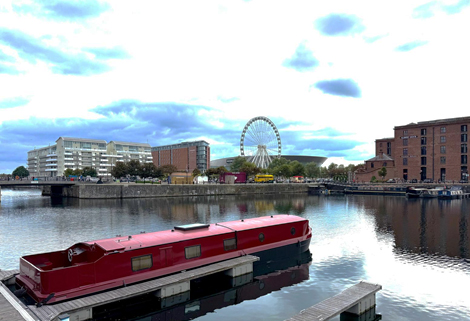
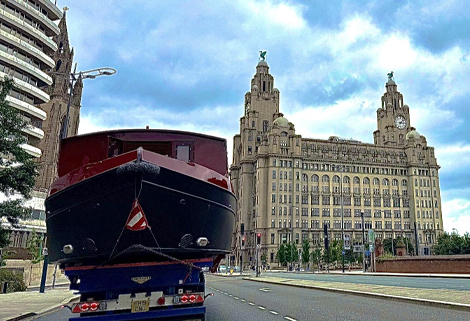
Plan B seemed more promising: navigate home via the new canal link from Salthouse Dock, up the Leeds & Liverpool Canal, then loop round to the Bridgewater. But drought had other ideas. At the Leigh Arm, low water halted progress. A waterway once designed to carry coal and cotton in all weathers could no longer float a boat in summer - a stark sign of climate instability.
That left Plan C: a daunting open-water route from Salthouse Dock, through Brunswick Dock, out onto the tidal River Mersey, then inland again via Eastham Lock, the Manchester Ship Canal, and Pomona Lock. This passage was built for commercial ships, not canal shells.
“With this being the only option, I suddenly had to plan a sea passage - thirty miles of obstacles between me and home,” Christina recalls. “Where do I even start?”
She had no knowledge of tidal navigation, no experienced friends to call on, and no idea about the mountain of permissions, licences, and marine safety rules ahead. “Every single stage was a battle,” she says. “Unanswered emails, phones that only worked certain days - it felt like organising a military operation.”
On top of the red tape, every stage depended on weather and tides. If conditions on the Mersey weren’t right, nothing could move. Thankfully, the ladies at Liverpool Marina in Brunswick Dock schooled her in the mysteries of tides, currents, and high water.
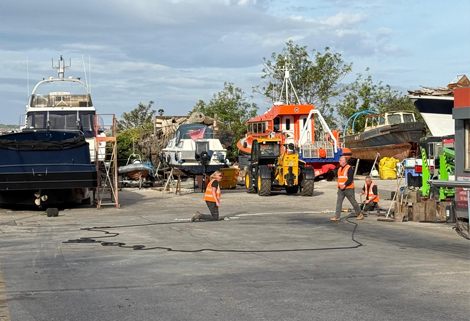
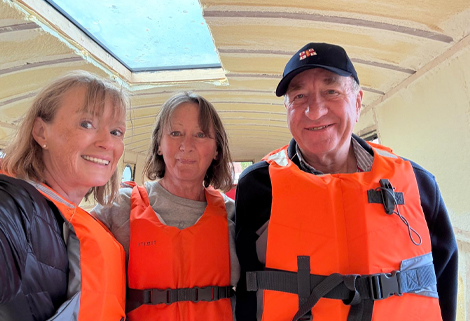
Before departure, the boat had to be certified seaworthy - a tall order for a shell designed for canals. Surveyor John Pope bent over backwards, even coming out on a Bank Holiday Sunday. He declared Fried Pussycat Seaworthy on the understanding Christina obtained an anchor for the journey.
Christina scrambled to gather BWW keys, barge poles, and mandatory safety kit. With Liverpool Marina’s Bluepoint team, she secured an anchor - custom-built at the last minute.
Every authority involved - Canal & River Trust, Peel Ports, Bridgewater Canal Company, Liverpool Marina, Bluepoint, and Collingwood - warned her never to attempt the Mersey alone. So she found and enlisted world-renowned Mersey pilot Stuart Wood, who reshuffled his diary to guide her.
On 27th August, wearing her “She Believed She Could So She Did” jumper, Christina set off with friends Jon and Angie for moral support, and Stuart guiding the black and red Fried Pussycat.
The Mersey was merciless. “The empty shell bucked on the waves like a biscuit tin in a storm,” she remembers. But grit - and Stuart’s expertise - carried her safely to Eastham.
Once inside the Ship Canal, the challenges were far from over. At each enormous commercial lock, the surge of water tossed the wide beam about like a toy.
At Eastham Lock, the first entry point from the Mersey, Fried Pussycat was thrown against the walls as the lock filled, her flat bottom slamming into the swell.
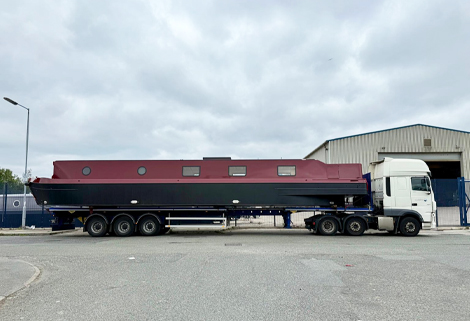
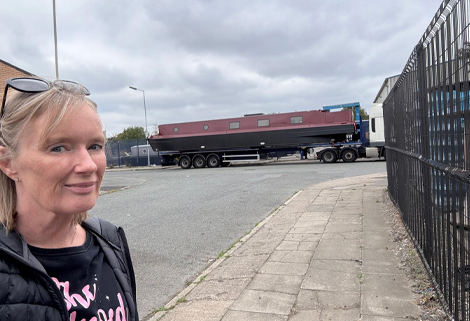
On arrival at Ellesmere Port Basin (which closed the day prior - you guessed it - due to low water) Christina’s eldest son Vincent took the tiller through a long, wet Thursday.
Latchford Lock, was a breeze, smooth and pretty simple with the assistance of Peel Port engineers.
At Barton Lock the vast chambers dwarfed the boat. The turbulence from the gates opening rolled her side to side, forcing constant corrections on the tiller.
By the time she reached Irlam Lock, fatigue set in. The endless heaving swell in each cavernous lock tested her nerve as much as her balance.
Finally, at the Mode Wheel Lock near Salford, the last barrier before Pomona, the flood of water surged so violently that Fried Pussycat slammed from side to side, a final reminder of how unsuitable a canal shell is for such waters.

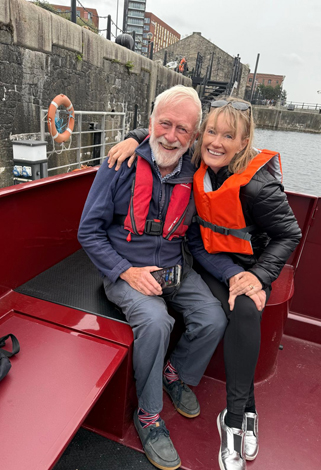
After enjoying the Salford Quays landscape Fried Pussycat reached Pomona on Friday. There, she briefly grounded on low water - another reminder of Britain’s fragile canals - before finally slipping through Pomona Lock into the Bridgewater.
Only after surviving this gauntlet of locks could Christina and her crew breathe a sigh of relief as they re-entered the comparative calm of the Bridgewater Canal.
Ninety minutes later, Fried Pussycat nosed into Oldfield Quays, where bacon butties and family cheers turned an ordeal into a triumph.
What should have been a 3.5-mile hop had become a 3.5-day odyssey.
What began as a simple delivery had evolved into a modern canal epic, shaped by bureaucracy, climate pressures, and crumbling infrastructure. Christina’s journey is proof that global warming is not an abstract idea, but a force reshaping Britain’s waterways.

What began as a simple delivery had evolved into a modern canal epic, shaped by bureaucracy, climate pressures, and crumbling infrastructure. Christina’s journey is proof that global warming is not an abstract idea, but a force reshaping Britain’s waterways.
Against the odds, Christina’s persistence, problem-solving, and sheer determination carried her through. She arrived wearing her other jumper - this one declaring: “Christina: The Woman Who Can Do Everything.”

